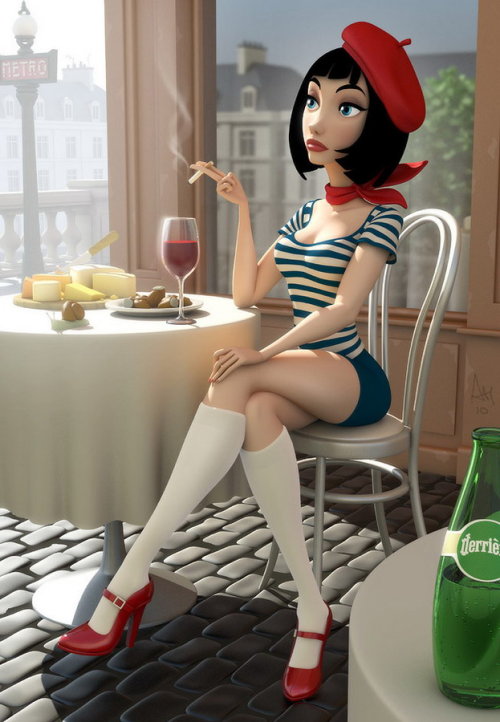
Via: List.co.uk
This morning, I read over on AWN that some guy, by the name of Terence Dunn, is suing DreamWorks for stealing his idea for Kung Fu Panda. Although everything is still at an early stage, this could shape up to be an interesting fight.
This is, of course, the worst fear of many animators, they pitch an idea to a network or studio, get turned around, and then just like that, see a project that’s eerily similar to their own being announced.
My recent post neglected to mention this whole area of copyright law as I regretfully forgot about it. Basically, you cannot copyright an idea, only actual creations. If you come up with the idea to make a show about, oh, I don’t know, an Octopus Pirate, then you can’t simply go around suing everyone if they come up with a show about a pirate who’s also an octopus.
That’s not to say that you shouldn’t defend your legal rights, if someone misappropriates your idea, you are certainly entitled to seek compensation. The point is that it is possible to be over-zealous. Think back to the lawsuit from a few years ago regarding SpongeBob Squarepants. Some guy (who has a Wikipedia page?) sued Viacom for stealing his idea for a talking sponge.
The guy’s argument was that in 1991, he created and flogged some sponges with a markered on face. If only he had read Jerry Beck’s excellent Nicktoons book, he would have noticed a comic, drawn by Stephen Hillenberg and featuring a character called Bob the Sponge that was dated 1989. It’s too bad that tons of court time were wasted on a frivolous lawsuit like this although I’m sure some lawyers somewhere are quite happy about the whole ordeal.
In a lawsuit such as the one mentioned at the beginning, the discovery phase will help uncover any and all information that both sides will need in order to build a case. For Dunn, it will hinge on whether or not his idea passes a series of tests that will determine whether or not his concept could be considered the same as Kung Fu Panda. Things such as the plot, character descriptions, design, tone of the story and so forth will be scrutinized in microscopic detail. In addition, the full details of any and all meetings with DreamWorks staff will be similarly torn apart in the quest for the proof needed.
Does the guys suit have merit? Perhaps, it’s still way to early to tell. The reason it’s in the news today is that the court has ruled that Dunn can look at DreamWorks books in order to determine how much he could be owed in damages. This is a bit of a silly move because, at least in my mind, what he is owed should not be motivating him at this stage of the lawsuit if he is truly in the belief that his idea was stolen. It should be blatantly obvious to everyone that Kung Fu Panda was a successful film (with 6 more announced?!) and there should be no doubt in his or anyone else’s mind that should he win, he would be in line for a substantial payout.
There is a good chance that DreamWorks will settle, especially if it looks like they will lose. As in most cases like this, it is much cheaper for them to offer the guy a certain (not unsubstantial) amount that puts everything to rest and allows things to carry on much as they did before.
It’s important to remember that situations such as this are extremely rare. Studios and networks are well aware of the potential for crippling damages if they are shown to have blatantly ripped off some-one’s idea, as a result, they are much more inclined (and motivated) to either acquire the original idea and develop it themselves, or take the basic concept (a kung fu panda) and turn it into their own creation.
Like I said at the beginning, you cannot copyright an idea (yet), only actual creative work. Lawsuits such as those mentioned above are all the more reason for animators to familiarize themselves with copyright law and what rights and limitations are set out within.

















 Woah! Big difference, eh? You can tell this one has real character, and she looks even more French than Colette!
Woah! Big difference, eh? You can tell this one has real character, and she looks even more French than Colette!